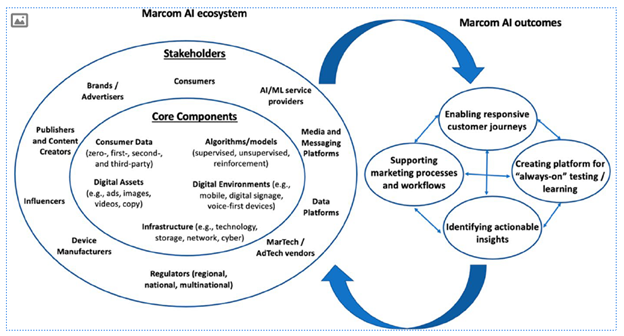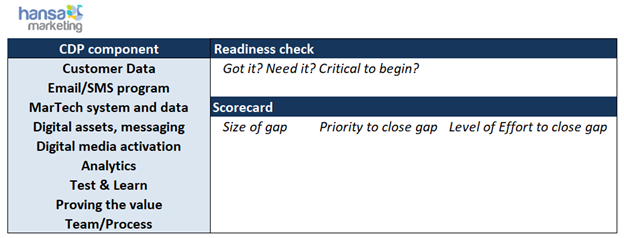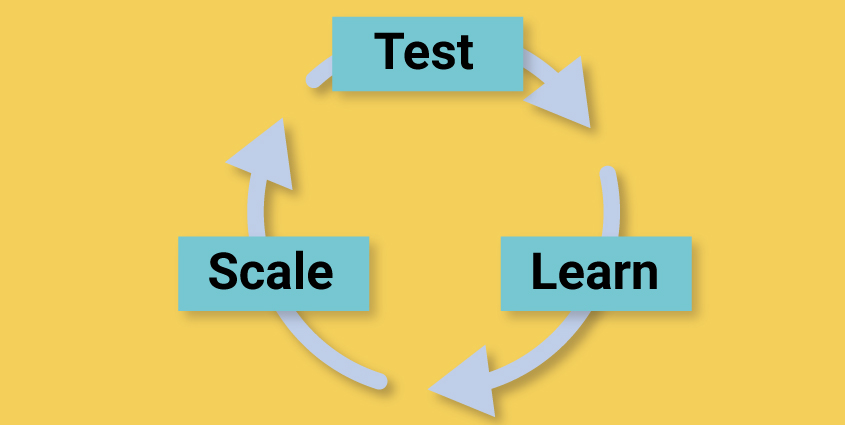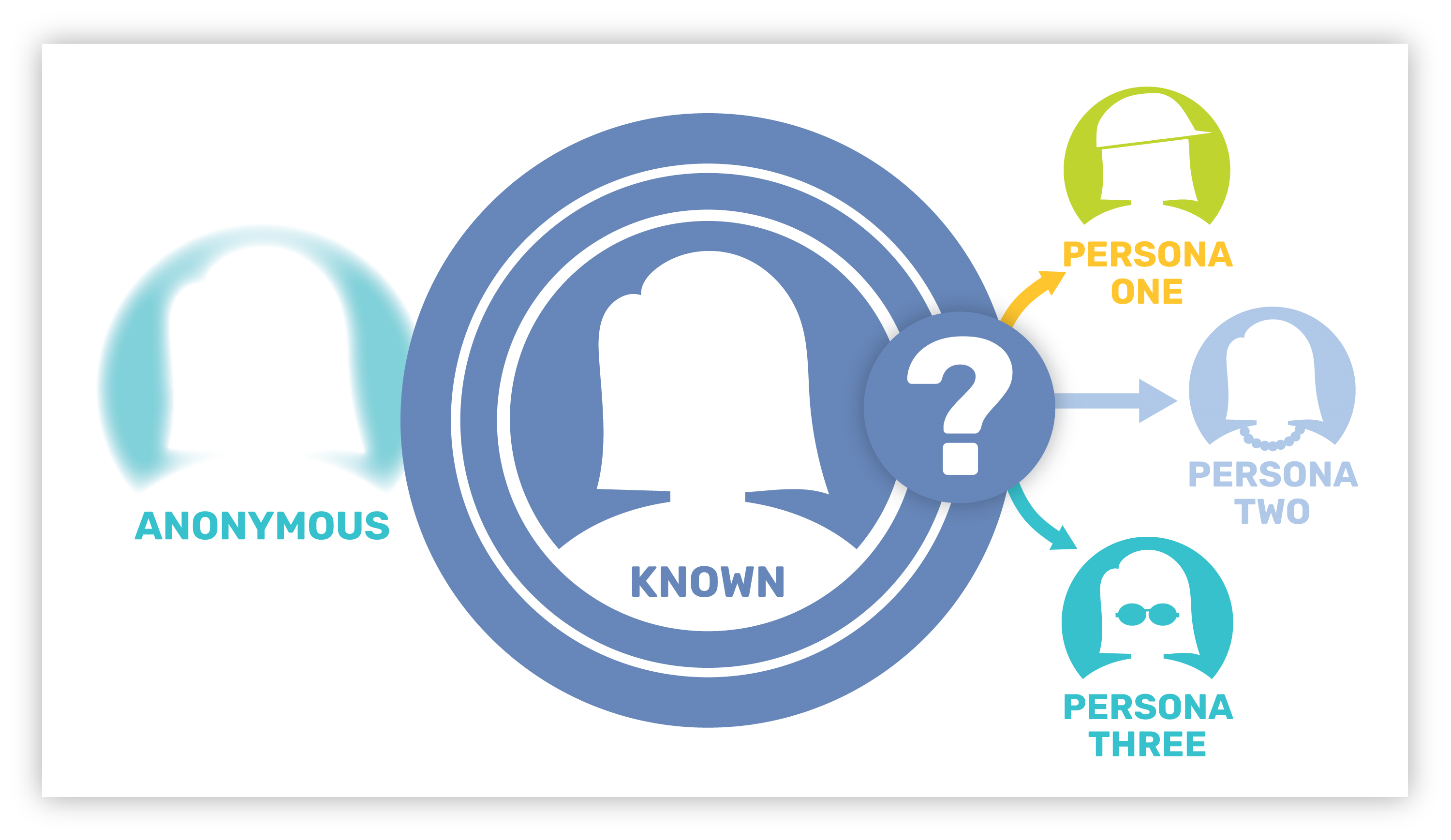Marketing leaders already know that Customer Data Platforms (CDPs) can provide a big step forward for brands. CDPs vastly improve the way brands recognize customers. CDPs can help personalize the customer experience seamlessly and across channels.Marketers also know CDPs optimize Marketing Communications using predictions and Artificial Intelligence (AI). But Marketers are nervous; just like with any Marketing Technology, CDPs can balloon in costs. Marketing leaders know they need to get more out of their customer data; but who’s going to build the CDP? Who’s going to run it?

Hansa’s Marketer’s guide to implementing a CDP helps Marketing leaders design, implement and get value out of a Customer Data Platform.
Why do brands need a CDP?
Customers have high expectations of brands. They expect seamless experiences across channels and devices. They get annoyed when brands don’t recognize them and are unaware of prior interactions. McKinsey proved that when customers share information with brands, they expect value in exchange; value is brands remembering them, anticipating their needs with relevance and timeliness. A Customer Data Platform is the Marketing Technology that makes that personalization possible. Forrester Research’s Joe Stanhope defines these are “moments” with a brand, and CDPs are the Marketing Technology that deliver experiences to keep customers shopping and advocating for their favorite brands.

But Marketing leaders know that, even with the newest technology, customers are still in control. Customers zigzag in and out of channels as they have experiences with brands. At each touchpoint, CDPs help Marketers answer basic questions:
- Who’s engaging with the brand?
- Have we seen this customer before? What have they done? How valuable are they?
- What are they looking for? (Are they part of a Persona we target? What should we say to them?)
- What is their future value? How much can we invest in them?
What are the components of a CDP?
Of course, we can describe CDPs functionally. There is no shortage of diagrams that visualize the components of a CDP and you won’t be surprised Hansa has its own diagram.

The key is Marketing leaders need to articulate how they expect CDPs to add incremental value and solve strategic problems. What are the business outcomes?
How can brands benefit from a CDP? Start with a needs analysis
Marketers need to be clear why they are implementing a CDP. Sounds easy, like picking from a long list of use cases. This is the hardest part- and the most important. Marketers that start with a needs analysis will have more success implementing a CDP. Start with strategic questions.
Strategic questions: Where is your brand in its product lifecycle? Do you have a brand awareness challenge? Do customers buy more than once and advocate for your products, or are they “one and done” who disappear mysteriously? Who are your competitors? Why do customers buy from you?
A needs analysis relates to the ROI you can expect from investing in a CDP. Implementing a CDP is an opportunity to prioritize the business outcomes you are looking for. Each outcome can be expressed as a use case and measured in terms of impact.
CDP use cases
Marketing leaders have found use cases to be helpful when estimating incremental value that can be gained from CDPs. What are use cases, and how do they help? Use cases came from the software development world. Software product managers invented scenarios for their users to solve problems.
Marketing leaders translate use cases into customer scenarios. Each scenario can be quantified in terms of financial benefit. Each scenario delivers measurable incrementality – a benefit that wouldn’t be possible without it. Gartner’s research reinforces the use case approach.
Marketing leaders know use cases are an effective way to define success and track against it. Here is a list of use cases based on our experience. Which do you think would have the biggest impact on your brand?
- Having a single-view of the customer to create more seamless experiences across devices and channels
- Personalizing email and SMS campaigns based on customer journey, familiarity with the brand, prior engagement
- Varying the experiences on websites when new visitors land (identifying where they came from and predicting what they want)
- Retargeting customers who leave the website with compelling messages and offers
- Predicting which existing customers will cool off and getting them to buy again with a next best offer or incentive
- Orchestrating all digital experiences and messages based on a customer’s persona, segment or lifecycle
- Marketing to lookalike audiences in paid digital based on personas or high value segments
- Communicating with email opt outs using other digital media besides email
What is the incremental value for each use case? What will C-level leaders expect from the CDP and what kind of metrics should we use to prove it? The CDP Institute has a definitive piece on CDP use cases but use cases only get you so far, now we have to measure overall success.
Measuring the ROI of CDPs
CDPs are not cheap. To gain executive support, Marketing leaders have to demonstrate how CDPs will deliver incrementality. They need to show CDPs as an investment, not a cost. And Marketing leaders need to show Return on Marketing Investment (RoMI).
The starting point is existing performance and an estimate of incremental performance attributable to the CDP (better targeting, more relevant messaging, cross channel integration etc.). CDP development partners can set expectations based on benchmarks. A business case is a function of volume, number of campaigns, average spend, attachment rate, and so on.
At Hansa, we define Key Performance Indicators (KPIs) during Discovery, prior to implementation. Each use case takes its place on an executive dashboard, designed to measure ongoing success of the CDP. Each has an alert to catch attention if it falls behind. We use these KPIs and dashboards in monthly and quarterly busyness reviews (QBRs). And these dashboards provide a golden opportunity to host any experiments or tests being done to continuously learn and scale.
The growing importance of first-party customer data
Customer data is the reason CDPs exist. First-party (1P) data typically comes from customer interactions, including signups, customer profiles, communication preferences, site behaviors, campaign responses and hopefully purchases.
CDP implementations begin by configuring the rules around customer identity. How loose or tight should the rules be? This directly relates to strategy and is a function of vertical industry and a number of other factors about permissible purpose and compliance rules. Once identity resolution is complete, the CDP is ready to deliver personalized experiences to customers
CDPs allow Marketing leaders to go from large untargeted segments to tiny micro-segments. This is where personalization and optimizing experiences make a big difference. Artificial Intelligence (AI) can help. AI is best suited for a host of use cases such as
- Targeting within a realtime context. Forrester reminds us that context creates customer connections (what else is the customer doing? Where are they located? What time is it? Etc)
- Assigning visitors or customers to persona groups
- Personalization to vary messages, channel, cadence, incentives based on who the customer is and what they are looking for
- Predictions, which feed the personalization engines with next best action for a product attachment, cross sell, subscription offer or winback
- Artificial Intelligence to improve performance beyond what humans can do when we setup campaigns based on calendars. Website, mobile experience optimization and even physical channel optimization (including providing data that store associates can use to identify returning store customers and predict what they are looking for)
All of this is within reach. The CDP implementation is a key to success to enable these capabilities for the future. Professor Ed Malthouse called this a a MarCom-AI ecosystem in a video interview.

Source: The MarCom-AI ecosystem as published in the International Journal of Advertising, 2022 – Malthouse and Copulsky
How long does it take to build a CDP?
Project planning is key to implementation. Marketing leaders can launch a CDP quickly with the development partner’s templates, but this is easy to underestimate. A CDP can take from 3 to 9 months to implement.
Project planning must go beyond templates. Who will be responsible for each task? What are the dependencies? What is the vendor going to do? Who will do the rest?
Hansa has developed robust PM processes to defend against scope creep and misunderstandings. Whatever process you use, make sure you commit resources and time to the CDP implementation. Don’t overlook User Acceptance Testing (UAT) and piloting before launch.
Don’t underestimate the impact of bad data in a CDP
What makes CDP implementation so problematic? Why is this so difficult? Most Marketing leaders underestimate data problems and overlook basic data problems to fix. Loading incomplete and inaccurate data will lead to wrong aggregations and an incorrect version of the truth. This can lead to bad audience decisions, flawed messaging, and ultimately, will be a drag on performance. The good news is the CDP is the solution and the perfect excuse to fix data problems once and for all.
Get your customer data ready for a CDP
The best CDP implementations have data exploration built in to the project. There are several tasks that can help:
- Data readiness report card
- Data audit, including validation of customer segments by behaviors, and product catalog data setup
- Data source and field mapping, identification of anything missing that is required
- Data cleansing, repair and formatting requirements
- Email deliverability and quality
- Customer identifier audits
The reward for data readiness is setting up ongoing data quality checking and early-warning systems to spot trouble before it affects Sales.
Get ready for CDP development
As Marketing leaders prepare to implement a CDP, most will have a “look in the mirror” moment. They ask, who is going to do the work?
An objective assessment of the work at hand usually leads to a skillset audit. Resources can come from the CDP vendor/partner, internal resources or through a CDP Marketing Agency like Hansa. The benefit of an agency is that it saves time and adds expertise, that may not exist within the organization.
Most Marketing leaders will have CDP partners include training in their solutions. This is a great investment. The best training is customized and done on a client’s data (not a generic dataset). This is a huge opportunity.
Planning for CDP success
Implementing a CDP will likely uncover issues relating to scope, data quality, resources, interoperability of tools, etc., but help is on the way.

Hansa has developed a CDP readiness scorecard which lists out critical CDP components brands need to success and highlights any gaps that need to be closed before the CDP is activated. This free tool will help brands and vendors start a conversation about implementing CDPs for success.
Done well, CDPs will deliver incremental value and improve a Marketing organization in the process.





